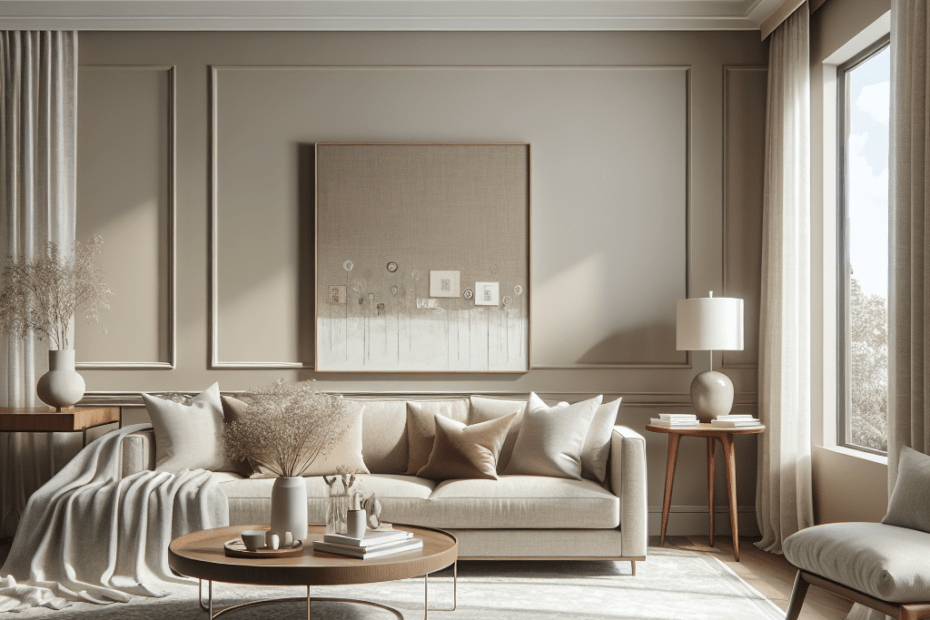“`html
How to Style a Living Room with a Neutral Color Palette
Many people are drawn to a calming and timeless aesthetic when decorating their homes. For this reason, they often consider adopting a neutral living room design. A neutral color palette includes shades like white, beige, gray, and taupe, which create a soothing and versatile foundation. This design choice not only exudes elegance but is also conducive to adding various decorative elements to personalize the space.
Understanding Neutral Living Room Design
Neutral living room design revolves around using colors that don’t overpower the space. According to Houzz, 86% of interior designers recommend sticking to a neutral palette for larger pieces of furniture, such as sofas, because these colors are versatile and always in style. Neutrals work well with different textures such as leather, wood, and textiles, providing room for creative expression. They can also brighten up the space, making it feel more open and airy.
Benefits of a Neutral Living Room Design
A neutral color scheme offers numerous benefits. It never goes out of style, making it a wise long-term investment. This palette is exceptionally adaptable; homeowners can easily switch out accessories to transform the room’s look with changing seasons or trends without major renovations.
Moreover, neutral shades can make small spaces appear larger and more inviting. According to the New York Times, decorating with lighter neutral tones can enhance natural light, giving the illusion of more space.
Table: Popular Neutral Colors and Their Effects
| Color | Effect |
|---|---|
| Beige | Warm, inviting |
| Gray | Modern, sophisticated |
| White | Clean, bright |
| Taupe | Earthy, cozy |
Tips for Styling a Neutral Living Room
The challenge with a neutral color palette lies in avoiding monotony. However, with the right approach, they can create a dynamic and inviting space. Here are some tips:
- Add Texture: Layering different textures can add depth. Use materials such as a wool throw, a velvet cushion, or a jute rug to bring richness to the space.
- Include Natural Elements: Integrating elements like wood, stone, and indoor plants can make a neutral room feel more grounded and inviting.
- Utilize Accent Colors: Pops of color through artwork, pillows, or vases can prevent the room from feeling flat.
- Experiment with Patterns: Incorporating patterns in your curtains or cushions can add energy and motion without deviating from the neutral theme.
- Play with Lighting: Introducing different light sources like floor lamps, overhead lights, and table lamps can add warmth and accentuate the room’s features.
Key Takeaways
- Neutral living room design revolves around a versatile and timeless color palette.
- Benefits include a spacious feel, adaptability, and modern elegance.
- Prevent monotony by adding texture, natural elements, and accent colors.
- Appropriate lighting enhances neutral palettes by adding warmth and highlight.
FAQs
-
What is the main advantage of a neutral living room design?
It provides a versatile backdrop, allowing for easy updates with varied decor trends.
-
How does a neutral palette make a room feel larger?
Lighter neutral shades enhance natural light, adding a sense of openness to smaller spaces.
-
Can neutrals work well with bold colors?
Yes, introducing bold accent colors can complement and enhance a neutral backdrop.
-
How can textures impact a neutral design?
Textures provide depth and interest, preventing neutrals from feeling bland or uninteresting.
-
What are some popular textures to incorporate?
Consider combining materials like wool, velvet, and linen, or natural textures like wood and stone.
“`
